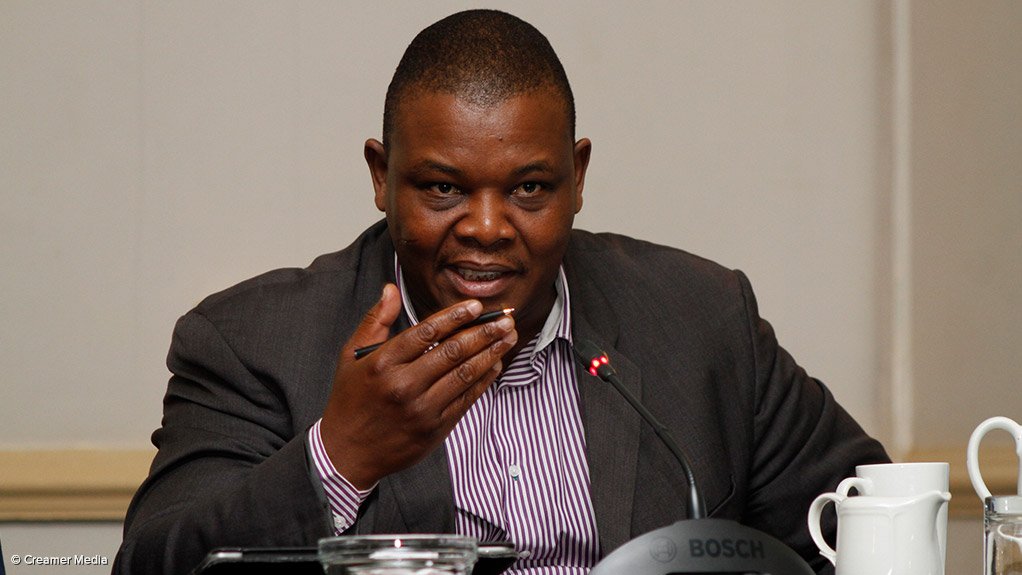Gauteng infrastructure dept mulls concept of construction bank or fund
The Gauteng Department of Infrastructure Development (DID) is exploring the possibility of establishing a dedicated construction or infrastructure bank or fund aimed at providing specialised funding or financing services to the construction sector.
Chairing an exploratory roundtable on the construction bank, Gauteng MEC for Infrastructure Development Jacob Mamabolo last week said the concept is one of several possible solutions for small contractors, in particular, who were battling to fund the first phases of a construction project.
This followed the DID’s engagements late last year with the industry, where financing was raised as a critical challenge to embarking on capital-intensive construction projects under tenders.
It was time to consider such solutions to industry’s challenges, and to also seek out other possibilities or methods to support service providers that allow the mobilisation of contractors, he said.
“If we find that there is something worth pursuing, then we can start formalising the process,” Mamabolo said of the concept at the inaugural meeting aimed at mapping out ideas.
Gauteng is under significant pressure to deliver high-quality infrastructure and services for its residents; however, service delivery in South Africa’s most populous province is grappling inefficiencies, in part owing to the difficulties faced by construction companies in marshalling significant initial upfront capital outlay or facing liquidity challenges mid-project.
A contractor under an awarded tender immediately needs to ensure insurance coverage, pay out performance guarantees and fund the site handover and preparation, often not being able to rely on monthly, on-time payments from government and having to carry over the costs for months.
Further, financing is difficult to secure under commercial banks’ stringent risk analysis, which often is a generic process that overlaps industries regardless of the specific-to-sector risks involved.
In addition, commercial banks are often hesitant to provide finance in the early stages of projects, as full revenue streams only start to flow on commissioning – and that is what can be the downfall of many players.
“Our model of infrastructure delivery and the way we work . . . raises issues whether we have paid sufficient attention to the needs of the industry,” Mamabolo commented, further questioning what could be done to support the development of small business within this gap.
“I do see a case for a very reliable source of funding, with reasonable interest rates,” Mamabolo added, noting the need for a fund to support contractor-members that have projects to unlock.
Mamabolo suggested the concept of a member-driven, self-sustaining financial institution undertaking risk analysis specific to the sector, and not the blanket tool of the commercial banks, and thereby creating a funding mechanism biased and specific to industry requirements and effectively closing the gap.
While the industry is not necessarily limited in access to financing, the packages and types of finance on offer may not be tailored to the requirements of contractors to take their project to bankability stage and beyond.
Some other ideas emerging from the first roundtable included mitigating the approach of running a “tender business” as opposed to a construction company, the payment of contractors within a 30-day timeframe, the development of a construction fund, rather than a bank, and value-addition services to cover the required insurance and performance guarantees, along with considerations for further capacity building at the implementing phase of the construction project.
Armed with a number of possible approaches and relevant solutions, an in-depth assessment of the industry is needed going forward.
Comments
Press Office
Announcements
What's On
Subscribe to improve your user experience...
Option 1 (equivalent of R125 a month):
Receive a weekly copy of Creamer Media's Engineering News & Mining Weekly magazine
(print copy for those in South Africa and e-magazine for those outside of South Africa)
Receive daily email newsletters
Access to full search results
Access archive of magazine back copies
Access to Projects in Progress
Access to ONE Research Report of your choice in PDF format
Option 2 (equivalent of R375 a month):
All benefits from Option 1
PLUS
Access to Creamer Media's Research Channel Africa for ALL Research Reports, in PDF format, on various industrial and mining sectors
including Electricity; Water; Energy Transition; Hydrogen; Roads, Rail and Ports; Coal; Gold; Platinum; Battery Metals; etc.
Already a subscriber?
Forgotten your password?
Receive weekly copy of Creamer Media's Engineering News & Mining Weekly magazine (print copy for those in South Africa and e-magazine for those outside of South Africa)
➕
Recieve daily email newsletters
➕
Access to full search results
➕
Access archive of magazine back copies
➕
Access to Projects in Progress
➕
Access to ONE Research Report of your choice in PDF format
RESEARCH CHANNEL AFRICA
R4500 (equivalent of R375 a month)
SUBSCRIBEAll benefits from Option 1
➕
Access to Creamer Media's Research Channel Africa for ALL Research Reports on various industrial and mining sectors, in PDF format, including on:
Electricity
➕
Water
➕
Energy Transition
➕
Hydrogen
➕
Roads, Rail and Ports
➕
Coal
➕
Gold
➕
Platinum
➕
Battery Metals
➕
etc.
Receive all benefits from Option 1 or Option 2 delivered to numerous people at your company
➕
Multiple User names and Passwords for simultaneous log-ins
➕
Intranet integration access to all in your organisation





















